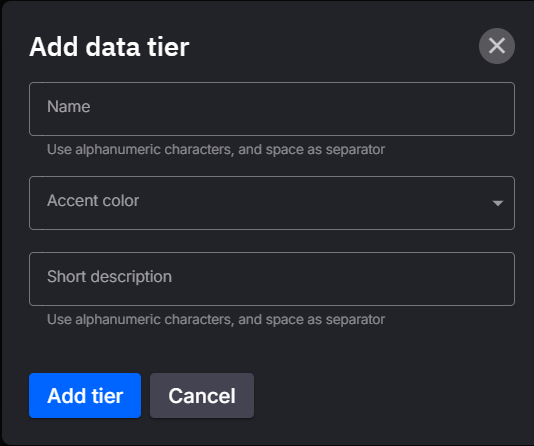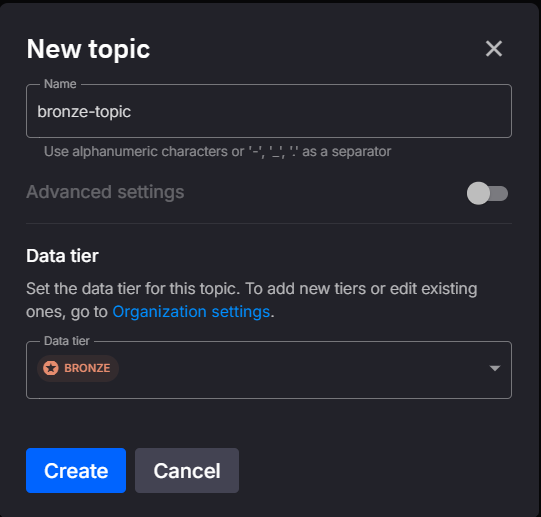Data Tiers
Overview
Our platform uses Data Tiers to categorize data into distinct levels, helping users understand the data’s readiness, quality, and processing level. By organizing data within a structured tier system, we ensure a clear and consistent approach to data management.
Medallion Architecture Basis
Our Data Tier system aligns with the principles of the Medallion Architecture, using a structured approach to categorize data into Bronze, Silver, and Gold tiers by default. This common approach helps organizations maintain consistency and clarity across data pipelines:
-
Bronze Tier (Raw Data): Stores raw data exactly as received from external sources, maintaining original structures and metadata. The focus is on capturing change history, data lineage, and auditability for reprocessing when necessary.
-
Silver Tier (Cleansed and Conformed Data): Consolidates and cleanses data from the Bronze layer to create a unified "Enterprise View" of business entities and transactions, like master customers and non-duplicated transactions. Designed to support ad-hoc reporting and advanced analytics.
-
Gold Tier (Curated Business-Level Data): Optimized, consumption-ready data curated for specific business needs such as analytics and reporting. This layer applies final transformations and quality checks to create project-specific, read-optimized tables, like Customer Analytics or Inventory Analytics.
While Bronze, Silver, and Gold tiers are pre-populated as defaults, users have full flexibility to define and manage their own data tiers as needed, adapting them to fit unique organizational needs.
Managing Data Tiers
The Data Tiers configuration can be found within the Organization Settings section. This area allows you to manage existing data tiers and add new ones to suit your organization’s requirements.
Organization Settings Section
In the Organization Settings section, you can see the list of current data tiers, including the default Gold, Silver, and Bronze tiers. You can edit, delete, or add new tiers as needed.
Adding a New Data Tier
To add a new data tier, click on Add new data tier. This will open a dialog where you can specify:
- Name: The name of the tier (e.g., "Gold", "Silver").
- Accent Color: A color to visually distinguish the tier.
- Description: A brief description outlining the tier's purpose.
Click Add tier to save your changes or Cancel to discard.
Setting Topic Data Tier
You can set the data tier for topics in two ways: through the UI and by using quix.yaml for Infrastructure as Code.
Setting Data Tier in the UI
In the topic configuration section within the UI, select the desired data tier (e.g., Bronze, Silver, or Gold) when adding a new topic. This is a straightforward way to categorize topics based on data quality and processing level.
This visual interface allows users to easily assign tiers without requiring code, making it accessible for quick, manual configurations.
Additionally, you can view a list of topics with their respective data tiers in the topics list:
Setting Data Tier Using quix.yaml
You can set the dataTier property in the quix.yaml file for Infrastructure as Code, specifying the data tier directly within this configuration file. Once set, sync the quix.yaml configuration to apply the data tier.
Data Tier per Environment
To assign different data tiers to the same topic across environments, you can utilize YAML variables:
Then, simply set thedataTier variable to the appropriate value for each environment.
For more details on using YAML variables, refer to the YAML Variables Guide.




.png)